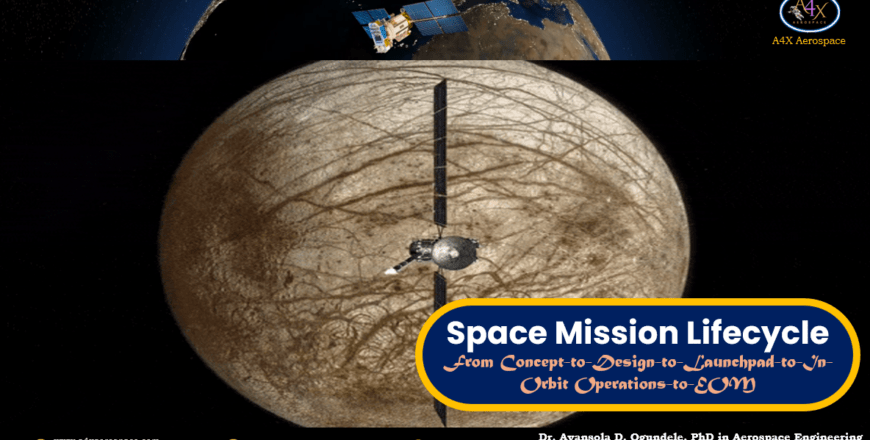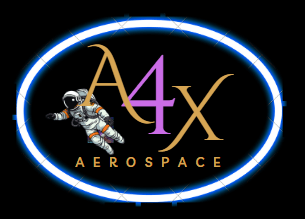Course Description
The need for space missions, complex projects undertaken for the investigation, exploration, use of space, and search for the possible existence of potential terrestrial life beyond the Earth, is driven by scientific curiosity, search for new knowledge, scientific discovery, in-situ resource utilization, space tourism, defense and security, communication, Earth observation, national and global advancement.
In the area of technological advancement, space missions are sought after for testing new and emerging technologies that could have broader applications on Earth. Presently, the cost of transporting materials to space is very high, dedicated space missions for resource extraction and utilization in space will help to reduce the transportation costs and potentially be of benefit to humanity. The development and implementation of space missions is helping to create jobs, stimulate economic growth, and foster innovation in various sectors such as education, commerce, industry, etc.
For many decades, space mission life cycles have been evolving, and significant advancements have been recorded on the effective design of the space mission lifecycle. During the early period of space missions, between the 1950s and 1960s, the main aims were to demonstrate the feasibility of space exploration and to be the first to achieve major space scientific milestones.
Activities during the early period of the Space Age led to the launch of the first artificial satellite, Sputnik-1 in October 1957, the launch of the first human Yuri Gagarin, in space, and Apollo missions to the Moon. During this period, the space mission lifecycle, which encompasses conceptualization, mission planning, design, development, launch, operations, disposal or retirement, and mission completion, was simple in comparison to the complex nature that we have today.
During the 1970s and 1990s space exploration era, the focus was on expanding scientific research, technological advancement, developing space infrastructure, and utilizing space for communication and Earth observation. In this period, space mission design phases were complex in comparison to the early period phases. Examples of space mission achievements during this period are the launch of Skylab, the Apollo-Soyuz Test Project, the Voyager missions to the outer planets, the development of space telescopes, communication satellites, and space shuttles.
In this modern space mission era, from the 2000s to the present, there have been long-duration space missions, robotic exploration of other planets, and the development of advanced technologies for space travel. This period is characterized by more detailed and comprehensive space mission design phases, including conceptual study, preliminary analysis, definition, design and development, operations, and sustainment. This period is characterized by increasing private space sector participation, increasing complexity, and increasing focus on scientific discovery and exploration.
Examples of space mission achievements in this modern period are the launch of the International Space Station (ISS), Mars rovers such as Curiosity and Perseverance, the James Webb Space Telescope, and a host of others.
Space mission lifecycle, a structured framework for managing space missions, is used by space mission designers and analysts to categorize all that is required to be planned and carried out to have successful space missions.
Space mission projects are divided into separate mission phases via Key Decision Points (KDPs), events used by the space mission decision-making authorities to determine how to move space mission activities forward from one phase to the other phase of the space mission lifecycle, or into another Key Decision Point.
Space mission design phase boundaries are generally defined to provide mediums or determinants for the transition from one phase to the other or a baseline for determining “GO” or “NO-GO” decisions. The inability of a space mission project to pass a KDP will lead to a decision to either retry to correct the deficiencies or to terminate the project.
In this course, Space Mission Lifecycle: From Concept-to-Designs-to-Launchpad-to-In-Orbit Operations-to-EOM, detailed analysis of the space mission design life cycle is described.
For a better understanding of the concept, the course is divided into three stages: pre-formulation, formulation, and implementation. The course is also divided into eight modules. The pre-formulation stage encompasses Pre-Phase A (conceptual studies). The formulation stage contains Phase A (Concept and Technology Development) and Phase B (Preliminary Design and Technology Completion). The implementation stage is made up of Phase C (Final Design and Fabrication), Phase D (System Assembly, Integration and Test, Launch), Phase E (Operations and Sustainment) and Phase F (Closeout). Also, the course is divided into eight modules – Module 0 to Module 8.
Insights you’ll gain
Skills you’ll gain
Target audience
Module 1 Part 1: Key Stakeholders Identification & Requirements Generation
Module 1 Part 2: Concept of Operations Baseline
Module 1 Part 3: Initial Risks Identification
Module 1 Part 4: Mission Objectives Performance & Baseline of Technology Development Plan
Module 1 Part 5: Space Mission Proposal Preparation & Doc. Reviews
Module 2 Part 1: Review of Pre-Phase A Baselined Documents
Module 2 Part 2: Baseline of Plans, Verification & Validation
Module 2 Part 3: Baseline of Mission Architecture
Module 2 Part 5: Phase A Document Reviews
Module 3 Part 1: Technology Development Definition & Prototyping
Module 3 Part 2: Establishment of Initial Project Baseline
Module 3 Part 3: Design Decision Validation
Module 3 Part 4: Project Technical & Business Evolving Baselines
Module 3 Part 5: Phase B Document Reviews
Module 4 Part 1: Development & Documentation of Hardware & Software Detailed Designs
Module 4 Part 2: Development & Refinement of Baselined Plans
Module 4 Part 3: Development & Refinement of Preliminary Plans
Module 4 Part 4: Risk Identification & Update & Sites Checkout
Module 4 Part 5: Phase C Document Reviews
Module 5 Part 1: Components Integration & Assembly
Module 5 Part 2: Assemblies Verification and Validation
Module 5 Part 3: Preparation & Baseline of Manuals & Support Sites
Module 5 Part 4: Lessons Learnt Documentation
Module 5 Part 5: Phase D Document Reviews
Module 6 Part 1: Mission Operations Plan Implementation, launch vehicle performance assessment Commissioning & Activation of Science Instruments
Module 6 Part 2: Mission Maintenance & Sustenance
Module 6 Part 3: Preparation for Deactivation, Disassembly, & Decommissioning
Module 6 Part 4: Lessons Learnt Documentation, Post-flight, & Final Mission Reports
Module 6 Part 5: Phase E Document Reviews
Module 7 Part 1: System & Supporting Processes Disposal
Module 7 Part 2: Mission Final Report Baseline
Module 7 Part 3: Mission Data Archival
Module 7 Part 4: Lessons Learnt Documentation
Module 7 Part 5: Phase F Document Reviews

